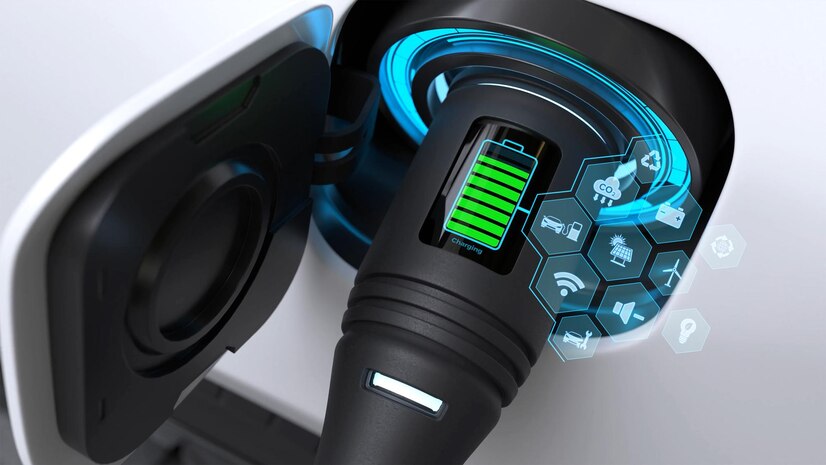The increasing number of electric vehicles in London has given rise to a massive demand for efficient charging solutions. Consequently, there is a growing interest in EV charger installation in London, and this varies significantly between residential and commercial applications. Homeowners and businesses need to understand the unique requirements, benefits, and challenges of each type of installation. Selection of the appropriate charger is one aspect, though regulation-related considerations would be somewhat complex to handle; therefore, decisions should be smart and thoughtful so that one can utilize the EV charging infrastructure to their best potential. This article will further compare residential versus commercial installations for EV chargers in depth to assist you in the proper choice of your option.
A) The Growing Need for EV Charging Infrastructure:
The UK government has announced its goals in increasing electric vehicle users. With new carbon targets set and programs on making a greener mode of transport, London leads the front with this development. This calls for the installation of effective and readily available charging stations in residential and commercial premises. Statistics indicate that recent statistics have shown that London aims to put up a minimum of 7,000 charging points by the end of 2025, and this figure is going to be even higher since more residents and businesses are adopting electric vehicles.
B) Overview of Residential EV Charger Installation:
Residential EV charger installation is installing charge units at private homes. It allows homeowners to have their electric vehicles charged up conveniently. The installation, in this case, brings along a number of benefits such as overnight charging, saving during off-peak hours of energy, and an increment in the value of a residence.
Types of Chargers:
There are three main categories of EV chargers used for residential purposes:
1) Level 1 Chargers:
These charge from a standard house outlet, 120V, so they are the slowest, maximum 3-5 miles per hour of charging. Of course, convenient for some of you, though likely too impractical for daily use.
2) Level 2 Chargers:
Suitable for residential installations in general household selection, which requires a dedicated 240 V circuit. Provides up to 10 – 60 miles per hour of range and is good for daily charging.
3) Smart Chargers:
The advanced chargers that have Wi-Fi connection and let you view charging status, plan your charging during off-peak hours, and save your money.
C) Installation Considerations:
There are considerations that need to be taken into place when considering the installation of residential EV chargers in London:
1) Electrical Capacity:
The house electrical capacity must be able to handle the added load from the charger. This may include upgrading the electrical panel or wiring.
2) Location:
The location of the charger installation will also determine its location. The location must be easily accessible by the vehicle and close to the electrical supply. Other aspects, such as parking space and garage layout, will dictate the best location.
3) Permits and Regulations:
Installation of the home chargers may require permits or other local regulations. The best approach is contacting a certified installer who is knowledgeable about building codes of London.
4) Cost Factors:
The cost for the installation of a residential EV charger in London will vary mostly on many factors:
i) Charger Type:
Level 2 chargers generally range from £400 to £800, and installation can be between £300 to £1,500 for a complex installation.
ii) Electrical Upgrades:
Upgrades of electrical systems might range from £500 to several thousand pounds depending on the existing infrastructure.
iii) Incentives and Grants:
The UK government also offers incentive programs for the installation of residential EV chargers, and one such scheme is the Electric Vehicle Homecharge Scheme (EVHS), under which up to 75 percent of the installation cost can be covered.
D) Commercial EV Charger Installation:
a) Overview:
Commercial EV charger installation involves the fitting of charging stations at various workplaces, public locations, and businesses. Such fitments are intended for employees, customers, and fleet vehicles to facilitate a mass-scale shift towards electric mobility.
b) Charger Types:
Similar to a residential installation, a commercial installation generally consists of Level 2 and Level 3 chargers:
i) Level 2 Chargers:
Suitable for workplaces, since the time required for employees to charge their car will be minimal.
ii) Level 3 Chargers (DC Fast Chargers):
High-power chargers that can deliver up to an 80% charge in as little as 30 minutes. Highly suggested for commercial locations, along highways and busy city center areas.
c) Installation Considerations:
When planning for commercial EV charger installation in London, several factors need to be considered for businesses:
i) Site Assessment:
The site assessment will ascertain the best locations for placing chargers based on foot traffic, accessibility, and current electrical infrastructure.
ii) Power Supply:
Businesses will need to assess their current electrical capacity and may need to have their systems upgraded to accommodate several chargers.
iii) User Experience:
There can be better user experience in using the chargers by clear signage, ease of payment, and customer support.
d) Cost Factors:
Installation of commercial EV chargers will vary depending on the following factors:
i) Charger Type:
Level 2 chargers will range between £400 to £2,000 each, whereas DC fast chargers can be anything from £20,000 to £100,000, depending on the manufacturer and the requirements for the installation.
ii) Installation Complexity:
Cost may get higher if substantial electrical upgrades and alterations on-site are needed.
iii) Incentives and Grants:
Commercial as well as residential installations can gain incentives from the government. Some of the popular initiatives are the Workplace Charging Scheme. Under this initiative, one can seek funds for the installation of electric vehicle chargers at commercial places.
E) Key Differences Between Residential and Commercial Installations:
1) Purpose and Usage:
The main difference between residential and commercial EV charger installations lies in the intent behind installation and usage levels. Residential ones are mostly for personal use, where charging of personal vehicles occurs overnight. Commercial ones serve several users: staff, customers, and fleet vehicles.
2) Number of Installation:
Commercial installation will need several chargers and more complicated installations than the residential. Thus, the size of the installation will add to the expense and time for installation.
3) Legal Compliance:
Residential and commercial installations are still subject to regional legal obligations, but commercial settings require a range of compliance with safety standards, accessibility guides, and environmental factors.
4) Cost Implications:
On the other hand, residential installations are relatively cheaper at installation and not as costly as their commercial counterpart, whose possible costs could be so high and associated with infrastructural investments followed by a considerable maintenance charge. On the other hand, commercial installations open up huge revenue generation opportunities due to the collection of fees.
The Final Words:
Demand for an Electric Vehicle Charger installation grows because most people and corporates shift to electric. Understand residential and commercial setups since both are very vital aspects while making the installation process for EV Chargers. Convenience by offering people the option of a recharge at home whereas to attract customers and in better sustainable efforts, businesses find benefit by installing a place in a commercial building or the street for a user who will be willing to do it.
Whether you intend to use the installation as a resident or for some commercial reasons, you find the best professionals to guide through the entire process so you get to select the equipment right for you, operate within your jurisdiction, and reap full benefits of EV charging in London. Alongside the activities to make the city green, the installation of these EVs will be paramount in delivering this cause into action for sustainable transport amongst all users.



